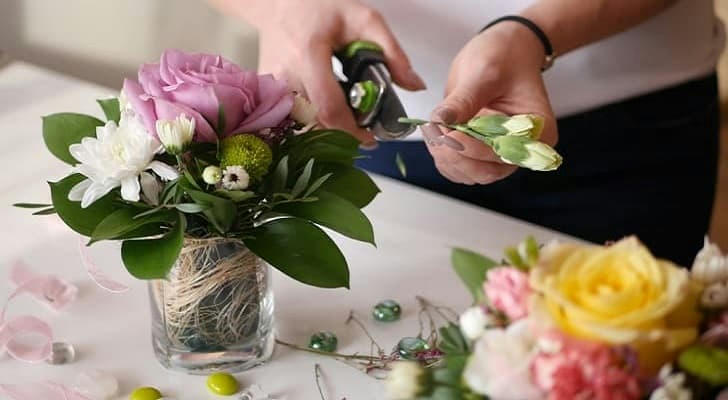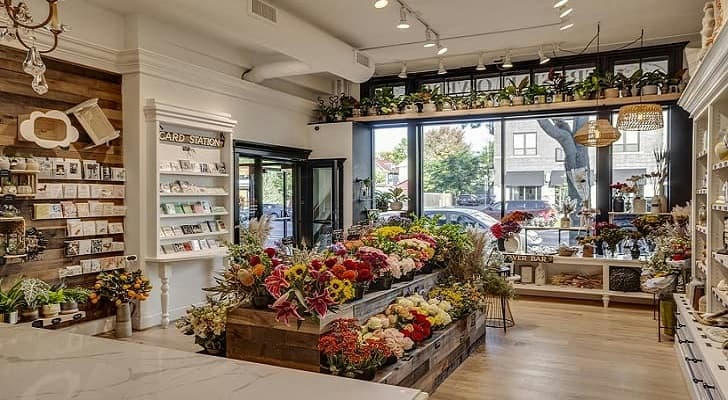Inspiration for florists: How to find the source of creativity
For florists, creativity is at the heart of the craft. Whether arranging flowers for a wedding, designing a bouquet for a corporate event, or simply creating something beautiful for a customer, the inspiration behind the work is what makes it stand out. But where does that creativity come from? How do florists find their spark, and how can they maintain it in a field that demands both artistic and technical skills? This article will explore different ways florists can find inspiration and how they can cultivate their creativity to stay at the top of their game.

The Role of Nature in Floral Design
One of the most obvious sources of inspiration for florists is nature itself. Flowers, plants, and the natural world provide an endless palette of colors, shapes, textures, and scents that can be translated into floral arrangements. For many florists, the outdoors serves as a reminder of the endless beauty that surrounds us, and taking the time to observe nature can provide fresh ideas. Whether it's a walk through a botanical garden, a hike in the woods, or simply spending time in the garden, observing how flowers grow in their natural environments can lead to innovative ideas for arranging them in new and exciting ways.
For example, a florist might notice how certain flowers grow together in the wild, such as how sunflowers and lavender often bloom side by side in rural fields. This natural combination could inspire a unique bouquet or arrangement that captures the essence of a specific place or season. Florists can also use the colors and textures they observe in nature to create harmonious and visually appealing designs that mimic the organic beauty they see outdoors.
The Power of Art and Design History
Beyond nature, many florists find inspiration in other art forms. Painting, sculpture, fashion, architecture, and graphic design all offer visual references that can influence floral arrangements. Art history is full of vibrant color palettes, geometric shapes, and balanced compositions that florists can incorporate into their work. Florists who study different art movements or explore galleries and museums can gain a deeper understanding of how to use color and form effectively in their designs.
One example of this is the influence of Art Nouveau on floral design. Art Nouveau, a popular art movement at the turn of the 20th century, is known for its flowing, organic lines and emphasis on natural forms. Many florists draw inspiration from this style by incorporating curving lines and intricate patterns into their arrangements, much like the stylized representations of flowers found in the works of artists like Alphonse Mucha.
The same principles can be applied to floral arrangements inspired by other art movements. For instance, the bold and geometric designs of Cubism might inspire a florist to experiment with angular shapes and fragmented floral patterns, while the free-flowing forms of Impressionism could lead to more abstract, loose compositions with soft, blending colors.
Understanding Your Clients' Needs and Emotions
For many florists, creativity is not just about creating something beautiful for its own sake—it is about evoking emotions and capturing specific moments in time. Weddings, birthdays, anniversaries, and corporate events often require a personal touch that speaks to the emotions of the client. Understanding the story behind the occasion, the preferences of the client, and the message they want to convey can be a powerful source of inspiration.
For example, if a couple getting married requests a vintage, romantic theme, a florist might draw inspiration from old family heirlooms, vintage fabrics, or even films from a specific era to create arrangements that reflect that nostalgia. The florist's creativity is guided not just by their own aesthetic but by the emotional significance of the flowers to the client.
The Role of Trends in Floral Design

Another way florists can find inspiration is by staying informed about trends in the floral industry. Just like in fashion and interior design, floral trends evolve over time, with seasonal colors, popular flowers, and design styles coming in and out of fashion. Keeping up with these trends can inspire florists to experiment with new looks or try combinations they might not have considered otherwise.
For example, recent trends in sustainable floristry have encouraged many florists to explore eco-friendly materials, local flowers, and designs that minimize waste. A florist might choose to highlight native flowers or work with organic, pesticide-free growers to create an arrangement that not only reflects current design trends but also supports environmental sustainability. Such trends challenge florists to think creatively about how they approach their designs while aligning with the values of their clientele.
Case Study: A Florist's Journey from Inspiration to Innovation
Take the example of Sarah Davis, a florist based in Portland, Oregon. Sarah’s creative journey began with a deep love for nature, particularly the Pacific Northwest’s diverse plant life. However, as her business grew, she realized that simply relying on the beauty of nature wasn't enough to stand out in a crowded market. She needed to push her creativity further.
One day, while browsing a local art gallery, Sarah came across a series of modern abstract paintings. She was struck by the use of vibrant colors and unusual shapes. This encounter inspired her to begin experimenting with more abstract and bold floral designs. Rather than sticking to traditional floral arrangements, Sarah started arranging flowers in unexpected shapes and using contrasting colors that were not typically paired together. She mixed tropical flowers with wildflowers, combined bright oranges with deep blues, and experimented with asymmetry. This new approach resonated with her customers, and Sarah's floral designs gained a reputation for being edgy, modern, and unique.
Today, Sarah draws inspiration from a variety of sources, including nature, art, and her own clients. Her creative process often begins with a walk in the forest, where she observes the changing seasons and draws inspiration from the colors of fall or the vibrant greens of spring. She combines this with her love of modern art to create floral arrangements that blend nature’s beauty with artistic innovation. Her work has not only earned her loyal clients but has also garnered attention from national publications.
Conclusion: Staying Inspired in a Creative Field

For florists, creativity is an ongoing journey that requires constant exploration and curiosity. Whether it’s through nature, art, personal connections with clients, or keeping up with industry trends, there are countless sources of inspiration waiting to be discovered. Florists who cultivate their creativity and remain open to new ideas will continue to push the boundaries of what floral design can be.
The key to staying inspired is to never stop learning, observing, and experimenting. Just as flowers bloom and change with the seasons, so too does a florist’s creativity. By finding inspiration in the world around them, florists can continue to create stunning arrangements that not only meet their clients’ needs but also inspire awe and admiration in anyone who sees them.
